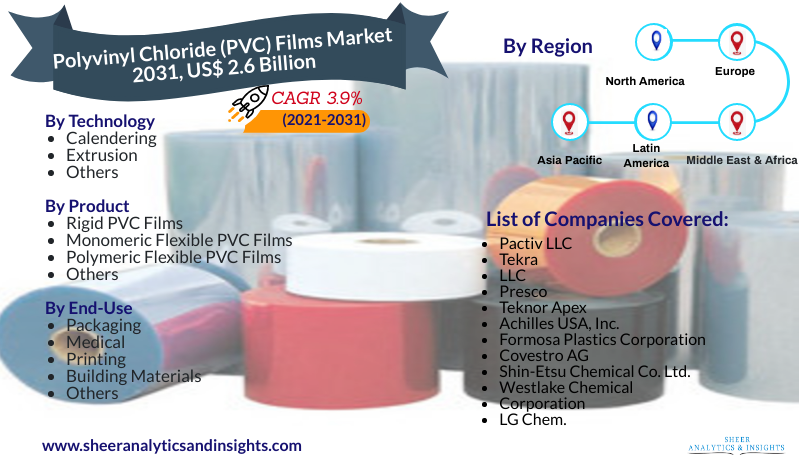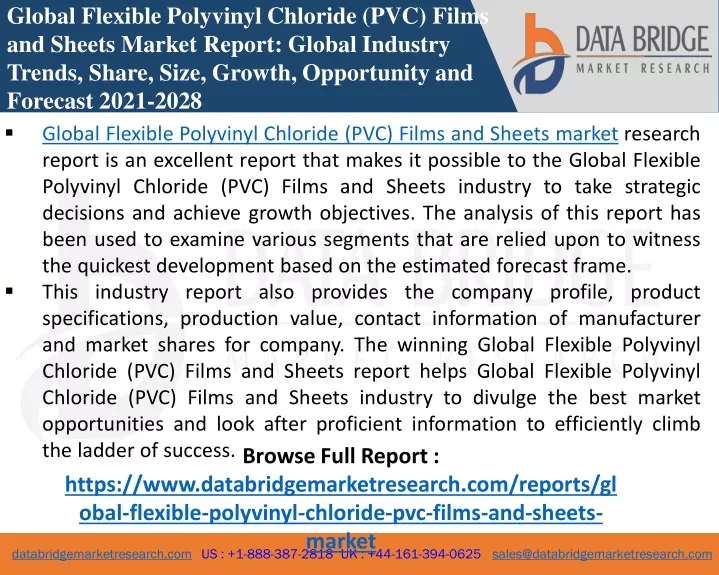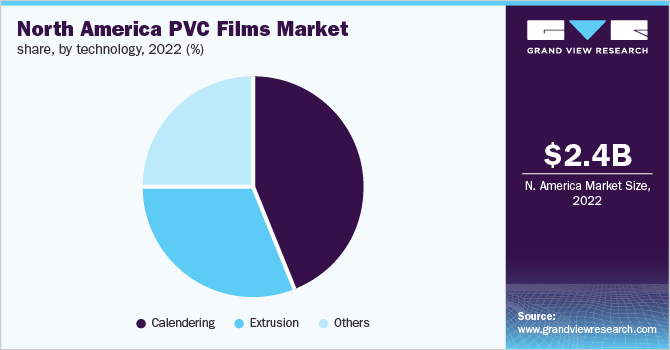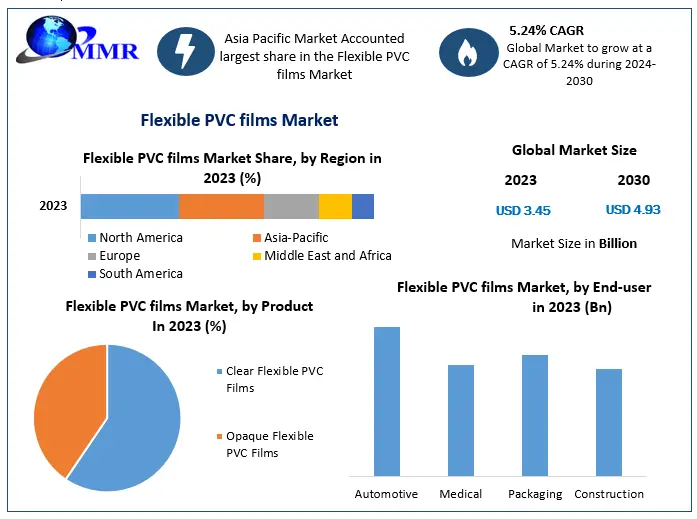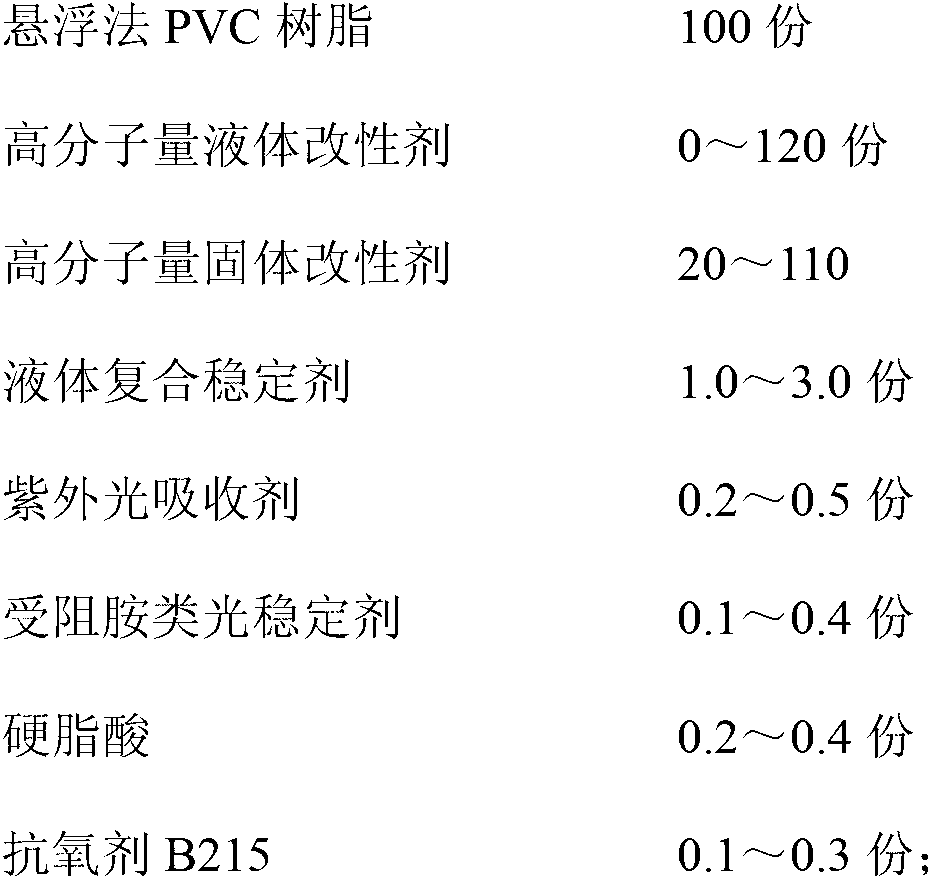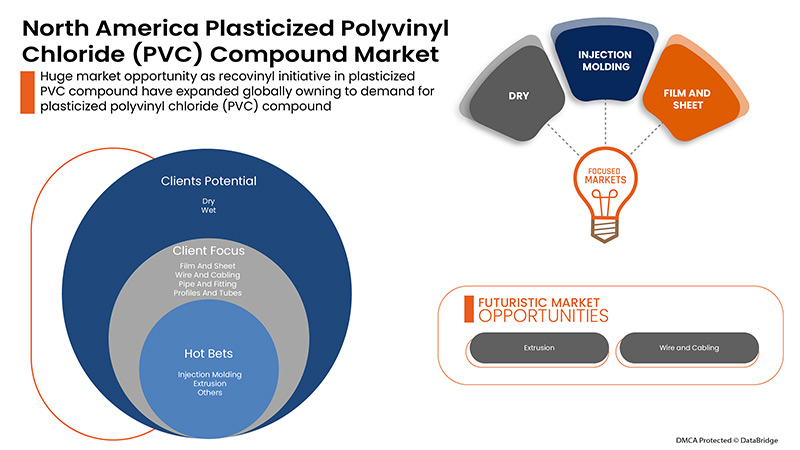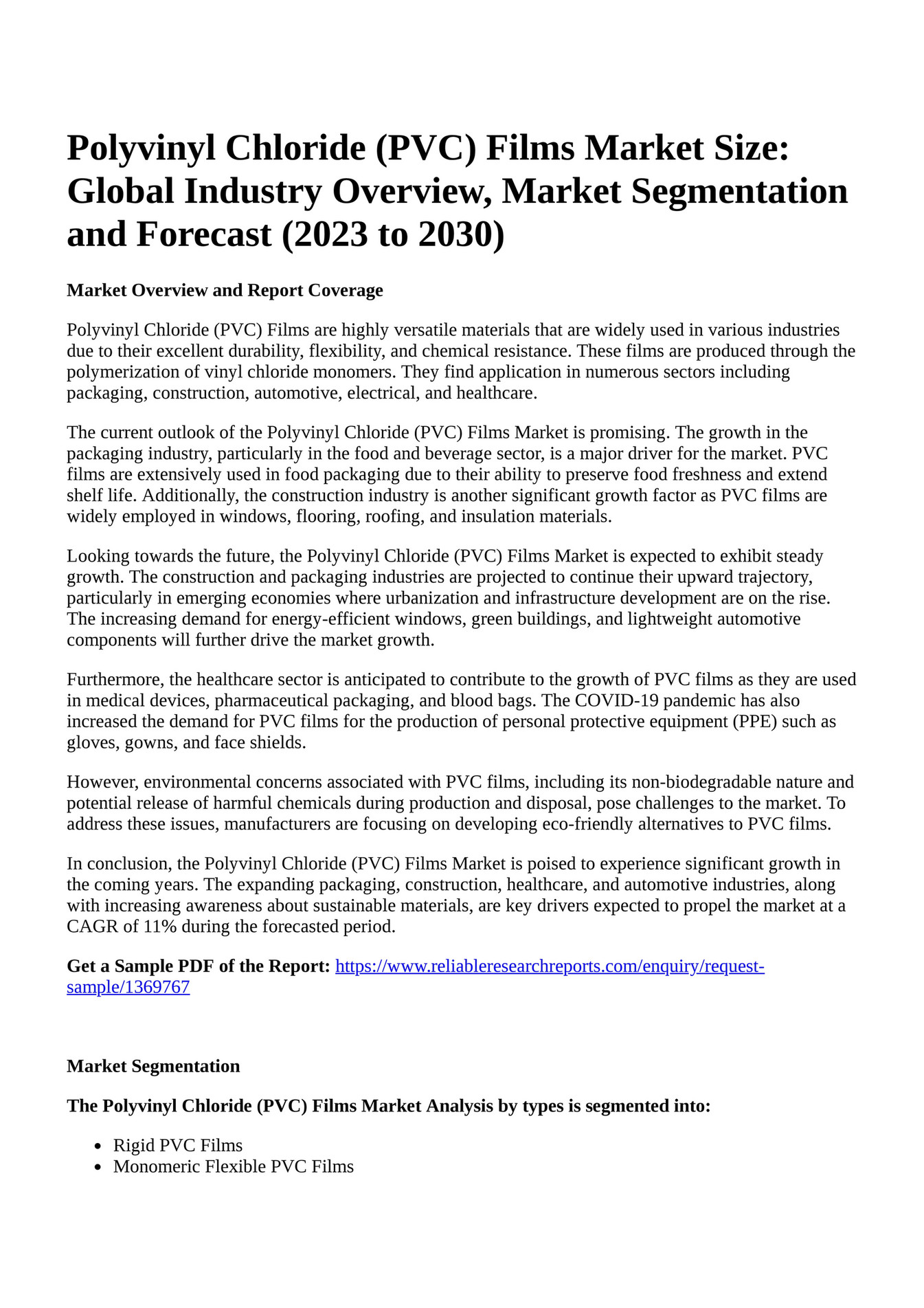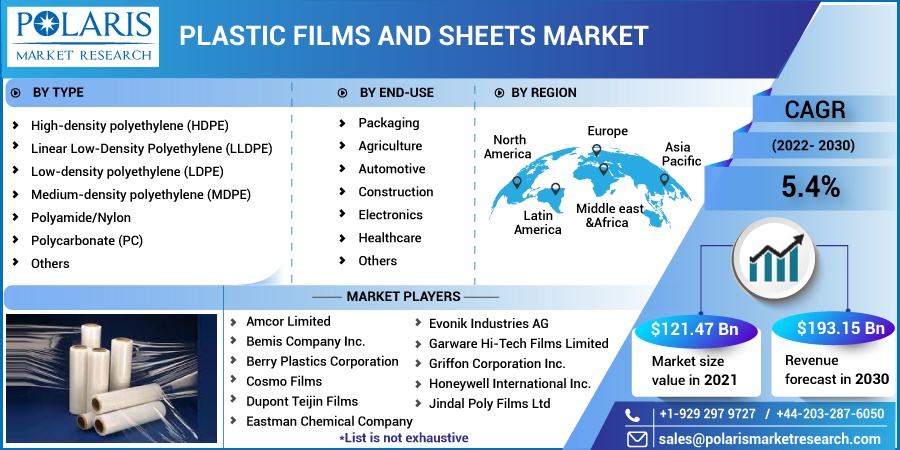Calendered Polyvinyl Chloride Flexible Film Market
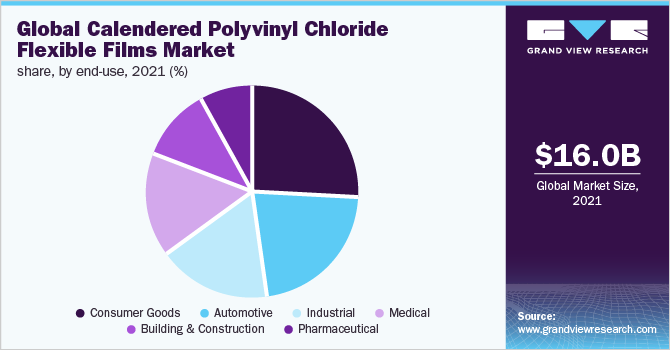
Imagine a world brimming with vibrant colors and intricate designs, from the eye-catching billboards lining city streets to the durable and protective covers safeguarding precious equipment. This is the world, in part, shaped by a seemingly unassuming yet remarkably versatile material: Calendered Polyvinyl Chloride (PVC) Flexible Film. It's a quiet revolution happening behind the scenes, impacting industries far and wide.
At the heart of this story lies the burgeoning market for Calendered PVC Flexible Film. This robust sector is witnessing significant growth driven by its adaptability and cost-effectiveness. Its applications span advertising, packaging, construction, and automotive industries, marking it as a material of immense economic importance. This article delves into the dynamics of this market, exploring its driving forces, challenges, and future prospects.
Understanding Calendered PVC Flexible Film
What exactly is Calendered PVC Flexible Film? It's a type of plastic film produced by calendering, a process that involves pressing PVC resin between heated rollers to achieve the desired thickness and texture. The resulting film is known for its flexibility, durability, and resistance to chemicals and weathering, making it suitable for a wide array of uses.
The key to its popularity lies in its inherent versatility. It can be easily printed on, laminated, embossed, and welded, allowing manufacturers to create tailored solutions for specific applications. This adaptability has cemented its position as a staple material in numerous industries.
Historical Roots and Evolution
PVC itself boasts a rich history dating back to the 19th century. However, the development of calendering techniques in the early 20th century truly unlocked its potential. Early applications were primarily focused on industrial uses, but the material quickly found its way into consumer products as manufacturing processes improved and costs decreased.
Over the decades, innovations in PVC formulations and calendering technology have expanded the capabilities of the film. Improved plasticizers have enhanced flexibility and durability. Advanced coatings and additives have boosted resistance to UV radiation and abrasion. These continuous improvements have enabled Calendered PVC Flexible Film to meet the ever-evolving demands of the market.
Market Drivers and Trends
Several factors are fueling the growth of the Calendered PVC Flexible Film market. Increased demand from the advertising and packaging sectors is a significant contributor. The rising popularity of digital printing and outdoor advertising has created a need for durable and weather-resistant materials, ideally met by PVC film.
The construction industry also plays a crucial role. PVC film is used in roofing membranes, waterproofing, and decorative laminates. The ongoing boom in construction activity, particularly in emerging economies, is boosting demand for these applications.
Furthermore, the automotive sector utilizes PVC film for interior trim, seat covers, and protective coatings. As vehicle production increases globally, the demand for automotive-grade PVC film rises accordingly.
Emerging Trends: Sustainability and Innovation
Like many industries, the PVC film market is increasingly influenced by sustainability concerns. Consumers and businesses alike are seeking more environmentally friendly alternatives. This has led to growing interest in bio-based plasticizers and recycled PVC.
Manufacturers are actively exploring ways to improve the sustainability profile of PVC film. This includes developing PVC formulations that use fewer hazardous chemicals and investing in recycling infrastructure to recover and reuse PVC waste. The development of innovative coatings and surface treatments is also enhancing the functionality and longevity of PVC film, reducing the need for frequent replacements.
Market Segmentation and Key Players
The Calendered PVC Flexible Film market can be segmented in several ways. By application, the market is divided into advertising, packaging, construction, automotive, and others. By thickness, the market can be categorized into thin films, medium films, and thick films.
Geographically, the market is segmented into North America, Europe, Asia Pacific, Latin America, and the Middle East and Africa. The Asia Pacific region is currently the largest market for Calendered PVC Flexible Film, driven by rapid industrialization and urbanization in countries like China and India.
Key players in the Calendered PVC Flexible Film market include prominent companies like NAN YA PLASTICS CORPORATION, INEOS, and Formosa Plastics Group. These companies are continuously investing in research and development to innovate and maintain a competitive edge. Small and medium-sized enterprises (SMEs) also play a vital role, offering specialized products and services to niche markets.
Challenges and Opportunities
Despite its promising growth prospects, the Calendered PVC Flexible Film market faces several challenges. Concerns about the environmental impact of PVC production and disposal remain a major hurdle. Stringent regulations on the use of certain plasticizers and additives further complicate matters.
Fluctuations in raw material prices can also affect profitability. PVC resin, the primary raw material, is subject to price volatility due to changes in crude oil prices and supply chain disruptions.
However, these challenges also present opportunities for innovation. Companies that can develop sustainable PVC formulations and efficient recycling processes will be well-positioned to thrive in the future. Embracing circular economy principles and investing in new technologies can help overcome environmental concerns and ensure long-term market viability.
Future Outlook
The future of the Calendered PVC Flexible Film market appears bright. Driven by increasing demand from various end-use industries and ongoing innovations in materials and processes, the market is poised for continued growth. Market research reports predict a steady expansion of the global market in the coming years. For example, a recent report by MarketsandMarkets projects a significant increase in market value by 2028.
The emphasis on sustainability will likely intensify. Increased adoption of bio-based plasticizers and recycled PVC will become crucial for staying competitive. Further advancements in calendering technology and surface treatments will enable the creation of even more durable and versatile PVC films.
The growth of e-commerce and the increasing demand for protective packaging will further boost the market. Calendered PVC Flexible Film is well-suited for creating tamper-evident seals and protective barriers for a wide range of products.
As the world continues to evolve and innovate, so too will the applications and capabilities of Calendered PVC Flexible Film. It remains a dynamic material with the potential to shape industries and improve lives.
Conclusion
The story of Calendered PVC Flexible Film is a testament to the power of innovation and adaptation. From its humble beginnings to its current prominence in diverse industries, this material has consistently evolved to meet the changing needs of the world. While challenges remain, particularly concerning environmental sustainability, the industry is actively pursuing solutions to address these concerns.
As we look ahead, it's clear that Calendered PVC Flexible Film will continue to play a significant role in shaping our built environment, protecting our products, and enhancing our experiences. Its versatility and cost-effectiveness ensure its continued relevance in a world increasingly demanding both performance and value. It is more than just a plastic film. It is a vital component of our modern world.
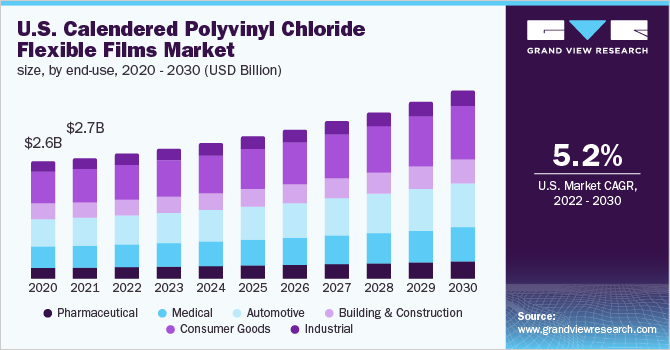
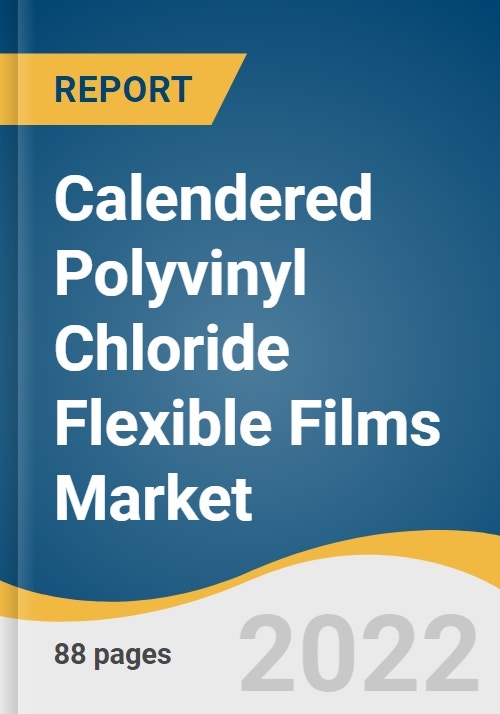




 Films Report Thumbnail.png)
